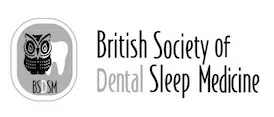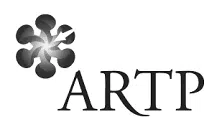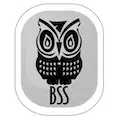Your Sleep Journey
Sleep Disordered Breathing is a heterogeneous disorder, and it is becoming more apparent that each patient needs a personalised treatment journey. That means that each patient has a specific need or tolerance of the treatments available and establishing that is the role of the sleep specialist and the trained dentist.
The most commonly prescribed treatment for Sleep Disordered Breathing (SDB) which includes snoring, upper airway resistance syndrome (UARS) and sleep apnoea (OSA) is Continuous Positive Airway Pressure (CPAP).
Mandibular Advancement Devices (M.A.D) are commonly prescribed for snoring and for the milder end of the disorder but they are gaining popularity, as they are being shown to be, in most cases, to be as effective as CPAP in controlling the symptoms of the disorder.
Surgery is recommended for obstruction due to enlarged soft tissue in the airway, or where the upper and/or lower jaw are under-developed or set back leading to airway obstruction.
The risks and benefits of each treatment modality for sleep apnoea vary depending on the individual case and the specific treatment being used. However, some general risks and benefits associated with common treatment options are:
- Continuous Positive Airway Pressure (CPAP) Therapy:
Benefits: CPAP therapy is the most effective treatment for sleep apnoea, reducing symptoms and improving overall health and quality of life. It is non-invasive and can be used in all types and severities of sleep apnoea.
Risks: The main risks associated with CPAP therapy are discomfort, airway dryness, nasal congestion, and difficulty tolerating the mask. Long-term use of CPAP may also lead to complications such as skin irritation, pressure ulcers, and sinus problems. There is a fairly high intolerance of this treatment.
- Oral Appliance Therapy: (MAD)
Benefits: Oral appliances are an effective treatment option for mild to moderate sleep apnoea. It has been shown in recent trials to be as effective as CPAP in a select group of severe apnoea patients. They are easier to use than CPAP machines and can be more comfortable and compliance is high.
Risks: Occasionally, oral appliances can cause jaw discomfort but can also help alleviate the same with careful assessment. Bite changes can occur but we try and minimise the risk with the appropriate exercises and use of morning re-aligners. On initial wear, the oral appliance can increase salivation but this usually abates in a few days.
- Surgery:
Benefits: Surgery can be an effective treatment for sleep apnoea in some cases, especially when other treatments have failed. It can improve breathing and reduce symptoms, leading to better sleep and quality of life
Risks: Surgery has risks associated with any surgical procedure, including bleeding, infection, and complications from anaesthesia. It may also lead to unintended consequences, such as worsening of sleep apnoea or changes in voice or speech.
- Lifestyle Changes:
Benefits: Making lifestyle changes such as losing weight, changing sleep position, and avoiding alcohol and sedatives can improve symptoms and reduce the severity of sleep apnoea.
Risks: Lifestyle changes may not be enough to fully treat sleep apnoea, and they may be difficult to maintain over time.
It’s important to discuss the risks and benefits of each treatment option with the sleep specialist or the trained dentist to determine the best course of action for you.
In addition to the above main treatments available, there are several new emerging therapies that have been developed.
- Positional Therapy. A large number of patients’ snoring and sleep apnoea is worse when lying on the back. To keep on the side, pillows and electronic gadgets are available to help.
- eXciteosa – this is a daytime treatment that passes gentle electrical pulses to the tongue fibres to make them less collapsible hence reducing the collapsibility of the tongue while
- Myofunctional therapy – this therapy is a useful adjuvant for strengthening the muscle around the mouth and the airway. This therapy involves daily exercises and particularly useful for children.
- Hypoglossal Nerve Innervation (HNI) This is a surgical treatment which involves embedding electrodes within the upper right clavicular area the nerve that serves the muscles of the tongue. It activates when the muscle collapses
- Nasal cones or strips to keep the airway open while sleeping is a good adjuvant with oral appliance therapy.
Mouth tape – Nasal breathing is the healthiest form of breathing recommended for every person. Breathing through the mouth is considered inappropriate as it not only dries the mouth but predisposes one to develop dental caries and gum disease. breathing through the nose is recommended for a number of reasons, the air is humidified, disinfected and dust particles are caught in the nasal passages. The most important aspect of nasal breathing is the release of a gas called NITRIC OXIDE. This gas is a very useful gas that dilates the airways and blood vessels, improving oxygenation and reduction of blood pressure. To encourage nasal breathing, the use of mouth tape is recommended.






